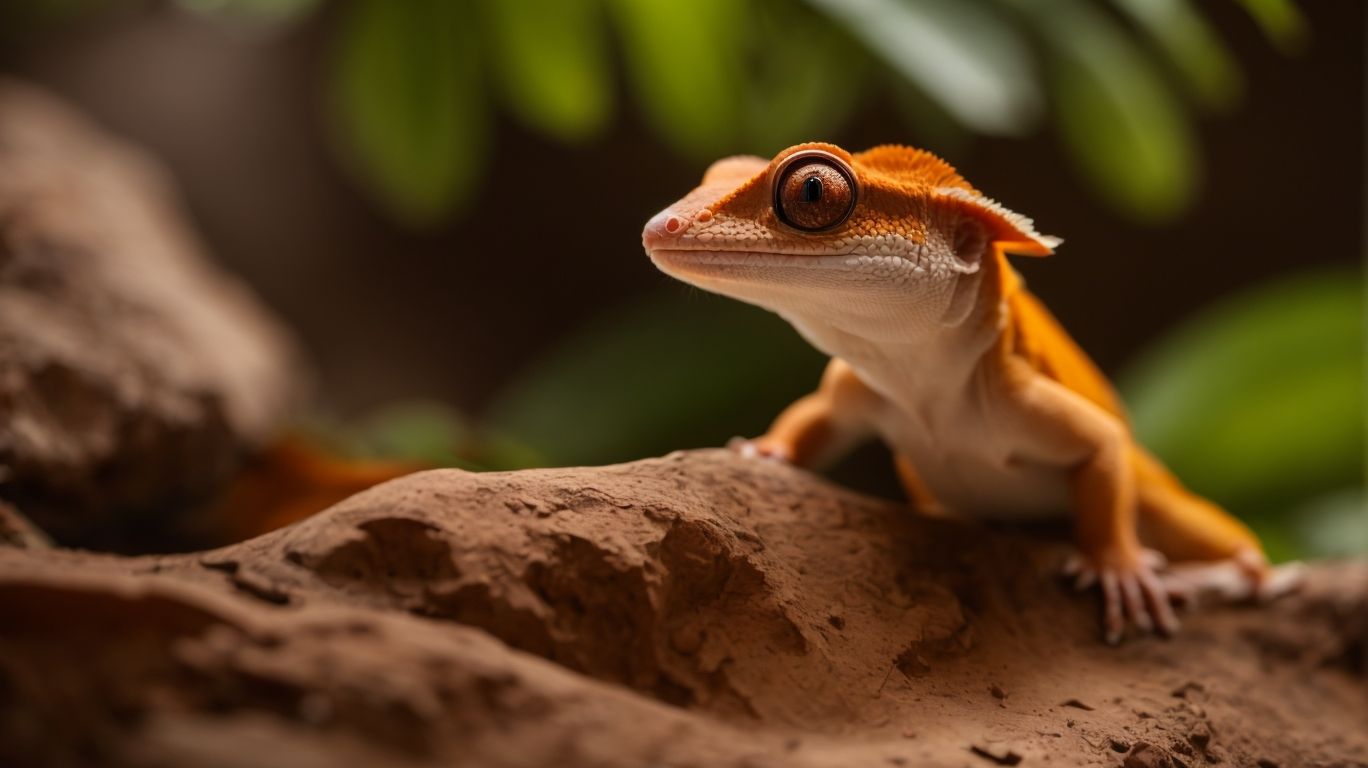
Discovering the Beauty of Axanthic Ball Python
Table of Contents
Understanding the Uniqueness of the Axanthic Ball Python
The axanthic ball python is truly a unique and captivating creature. Its stunning black and white scales set it apart from other ball python morphs, making it a favorite among reptile enthusiasts. But what exactly makes the axanthic ball python so special?
One of the key aspects of the axanthic ball python’s uniqueness lies in its genetics. This color morph is the result of a recessive gene mutation, which causes a reduction or absence of yellow pigment in the snake’s scales. This results in the striking black and white coloration that makes the axanthic ball python so visually striking.
The axanthic gene can be inherited from either one or both parents, depending on the specific genetics of the snake. This means that breeders have the opportunity to selectively breed axanthic ball pythons to produce more of these beautiful snakes. However, because the axanthic gene is recessive, breeding axanthic ball pythons can be a bit more challenging and requires careful pairing to ensure the desired outcome.
In addition to their unique genetics, axanthic ball pythons also exhibit fascinating morphs. These morphs can range from simple single gene combinations to complex combinations of multiple genes, resulting in a wide variety of patterns and colorations. Each morph is like a work of art, with its own distinct beauty.
An Insight into Axanthic Ball Python Morphs
Axanthic ball pythons are not only unique in their coloration, but they also have a wide variety of morphs that make them even more fascinating.
One popular morph is the axanthic piebald, which combines the axanthic gene with the piebald gene. This results in a snake with a white base color and distinct black patches or “pied” areas. The contrast between the white and black creates a visually striking and beautiful snake. Equally captivating is the axanthic pastel morph, resulting from the amalgamation of the axanthic and pastel genes. This combination bestows upon the python a metallic grey sheen with faded markings, giving it an ethereal and haunting look.
Another morph is the axanthic clown, which combines the axanthic gene with the clown gene. This morph produces a snake with bold, bright colors and unique pattern variations. The combination of the axanthic and clown genes creates a snake that is truly mesmerizing to look at.
Feeding Your Axanthic Ball Python
Feeding your axanthic ball python is an essential aspect of their care. These snakes are carnivorous, meaning they primarily eat rodents such as mice or rats. Providing them with a balanced and appropriate diet is crucial for their overall health and well-being.
When it comes to feeding your axanthic ball python, it’s important to offer prey that is the appropriate size for their age and size. Starting with small rodents and gradually increasing the size as they grow is ideal. Feeding them pre-killed or frozen-thawed prey is highly recommended to ensure their safety and to prevent any injuries that could occur during live feeding.
Feeding your axanthic ball python should be done in a separate feeding enclosure to prevent any potential stress or aggression. This can be a plastic tub or a designated feeding tank. Allow your snake to strike and constrict its prey in a quiet and calm environment.
It’s important to note that axanthic ball pythons are ambush predators and have a slow metabolism. Therefore, they do not require frequent feedings. Young axanthic ball pythons may need to be fed every 5-7 days, while adults can be fed every 1-2 weeks.
As with any feeding, it’s crucial to monitor your snake during and after the feeding to ensure they are properly consuming their prey. If your axanthic ball python refuses to eat or regurgitates its meal, it may be a sign of an underlying health issue and a veterinarian should be consulted.
Enclosure Requirements for the Axanthic Ball Python
Proper enclosure requirements are crucial for providing a comfortable and secure habitat for your axanthic ball python. These beautiful creatures require specific conditions to ensure their well-being and allow them to thrive in captivity.
First and foremost, the size of the enclosure is important. A glass terrarium or a plastic tub with secure lids will work well for an axanthic ball python. The enclosure should be spacious enough for your snake to stretch out comfortably, but not too large as it may cause stress. A general rule of thumb is to have an enclosure that is at least the length of the snake and one-third of its width.
Creating the right temperature gradient is also essential. Axanthic ball pythons require a warm side and a cooler side in their enclosure. The warm side should have a temperature ranging from 85-90 degrees Fahrenheit, while the cooler side should be around 75-80 degrees Fahrenheit. This temperature gradient allows your snake to regulate its body temperature by moving between the different areas of the enclosure.
Humidity levels are another crucial factor to consider. Axanthic ball pythons require a humidity level of 50-60% to prevent issues such as dehydration and shedding problems. To achieve the right humidity, you can use a reptile-specific humidity gauge and a substrate that holds moisture well, such as cypress mulch or coconut husk bedding. It’s important to mist the enclosure regularly to maintain the desired humidity level.
Proper lighting is also necessary for your axanthic ball python’s enclosure. While these snakes do not require UVB lighting like some other reptiles, providing a regular day and night cycle can help establish a natural routine. You can achieve this by using a low-wattage incandescent bulb or a reptile-specific heating lamp.
The enclosure should have appropriate hiding spots and decor. Axanthic ball pythons enjoy hiding and feeling secure, so providing multiple hiding spots, such as reptile caves or hollow logs, is essential. Adding branches, foliage, and other decor can also create a stimulating and enriching environment for your snake.
Regular cleaning and maintenance of the enclosure are essential to prevent the buildup of bacteria or parasites. The substrate should be spot cleaned regularly and completely replaced every few months. Water should be provided at all times in a shallow dish for your snake to drink and soak in.
Potential Health Issues and Solutions
As with any pet, axanthic ball pythons can sometimes face health issues that require attention and care. It’s important for owners to be aware of these potential health issues and know how to address them.
One common health issue that axanthic ball pythons may experience is respiratory infections. These infections can occur due to improper humidity levels or poor ventilation in their enclosure. Symptoms of a respiratory infection include wheezing, excessive mucus, and difficulty breathing. If you notice any of these signs, it’s crucial to seek veterinary care immediately. Your vet will be able to prescribe antibiotics to treat the infection and provide guidance on how to improve your snake’s enclosure conditions.
Another potential health issue that axanthic ball pythons may encounter is parasitic infections. Parasites such as mites or ticks can attach themselves to the snake’s scales and cause discomfort and irritation. Regularly inspecting your snake for any signs of parasites, such as tiny black or red dots on their skin, is important. If you detect any parasites, consult your vet for appropriate treatment options.
Health monitoring and regular veterinary care are important for maintaining the health of your axanthic ball python, contributing to the longevity and vitality of your axanthic ball python in captivity.
Fascinating Facts About the Axanthic Ball Python
The axanthic ball python is not only visually stunning, but it also has some fascinating facts that make it even more intriguing. Here are some captivating tidbits about this unique snake:
- Rare Phenomenon: Axanthic ball pythons are considered rare in the reptile world. Their striking black and white coloration sets them apart from other ball python morphs, making them highly sought after by collectors and breeders.
- Natural Camouflage: The black and white scales of the axanthic ball python provide excellent camouflage in their natural habitat. This allows them to blend seamlessly into their surroundings, making them effective predators.
- Docile Temperament: Axanthic ball pythons are known for their docile and calm nature. They are typically gentle snakes, making them popular pets for both beginners and experienced snake enthusiasts.
- Long Lifespan: With proper care, axanthic ball pythons can live for more than 20 years in captivity. This longevity allows owners to enjoy their unique beauty and companionship for many years.
- Diverse Morphs: The axanthic gene can be combined with other genetic mutations to create a wide variety of morphs. This means that there is a seemingly endless combination of patterns and colorations that can be produced, adding to the fascination of these snakes.
- Variation in Size: Axanthic ball pythons can vary in size depending on their genetic makeup and the care they receive. Some individuals can grow up to 5 or 6 feet in length, while others may remain smaller at around 3 to 4 feet.
Final Thoughts on Keeping an Axanthic Ball Python as a Pet
When it comes to caring for an axanthic ball python, it’s important to provide them with the right enclosure, temperature, and humidity levels. Creating a comfortable and secure habitat will ensure their well-being and allow them to thrive in captivity. Feeding your axanthic ball python a balanced diet and providing regular veterinary care are also crucial aspects of their care.
One of the remarkable aspects of keeping an axanthic ball python as a pet is their docile and gentle temperament. And with their long lifespan, you can enjoy the unique beauty and companionship of your axanthic ball python for many years.
Keeping an axanthic ball python as a pet can be a rewarding and fascinating experience. These unique and beautiful creatures bring a sense of wonder to any reptile enthusiast or snake lover. As we’ve explored in this blog post, axanthic ball pythons are not only visually striking but also exhibit a wide variety of morphs that make them even more captivating.
Related Posts

Incubating Crested Gecko Eggs: Essential Techniques and Tips
Crested geckos are fascinating reptiles that are known for their…

Red Crested Gecko Health: Common Issues and Preventive Care
Are you a proud owner of a red crested gecko?…

Creating the Ideal Environment for Your Red Crested Gecko
Do you own a red crested gecko or are you…

No Comments